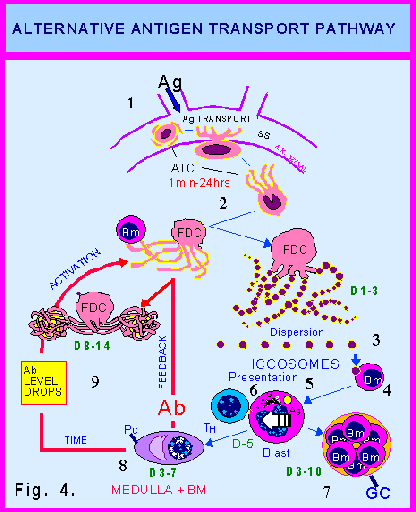|
8. The Germinal center reaction in the development and maintenance of Humoral Immunity. The numbers and size of germinal centers increase during an infection when bacterial or viral antigens (e.g.proteins characteristic of the infecting agent) enter a draining lymph node via the afferent lymphatics or get into the spleen via the blood. The increase in numbers of germinal centers is due to the development of new germinal centers. Increase in size reflects the production of B memory cells and plasma cells or their precursors. Germinal centers are induced by the stimulation of B cells by the microbial antigens on the surface of follicular dendritic cells. However, FDCs cannot trap antigen by itself, but only in the form of antigen-antibody complexes, it is important to know that the primary antibody response is responsible for the production of the initial antibody to the infecting organism. a. Cellular events in the germinal center reaction during the secondary antibody response (See Fig. 4). This cycle of cellular events taking place in the microenvironment of lymphoid nodules is believed to be responsible for the maintenance of antibody levels, the maintenance of immunity. This is accomplished through the production of antibody producing plasma cells and B memory cells. |
 |
CELLULAR
EVENTS: See summary on next page. |
|
|